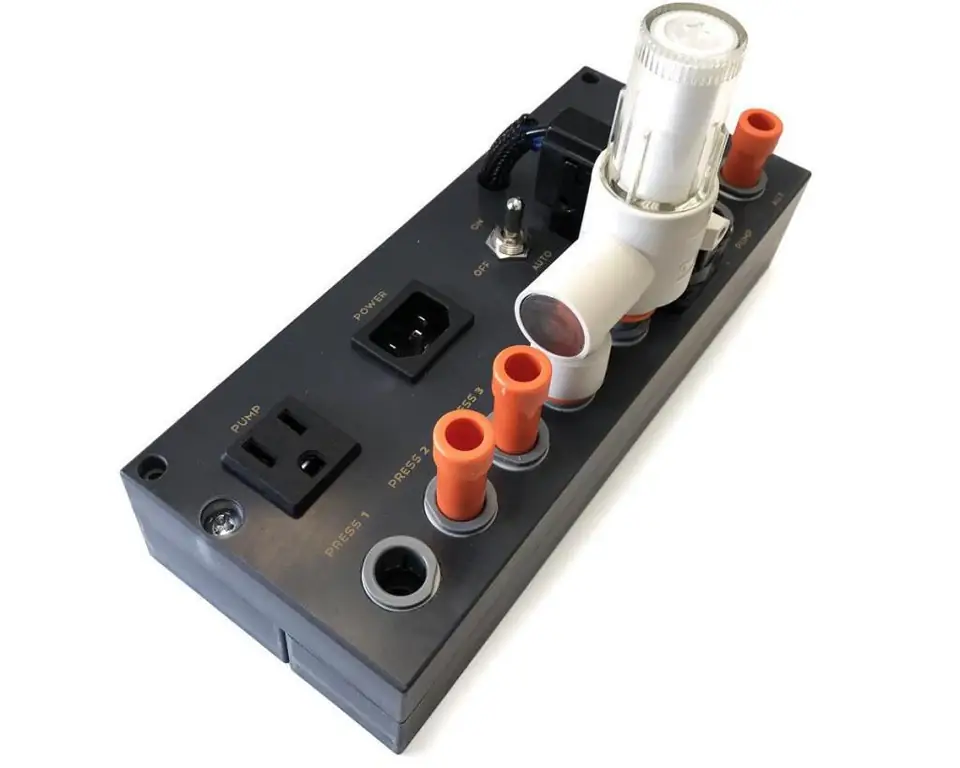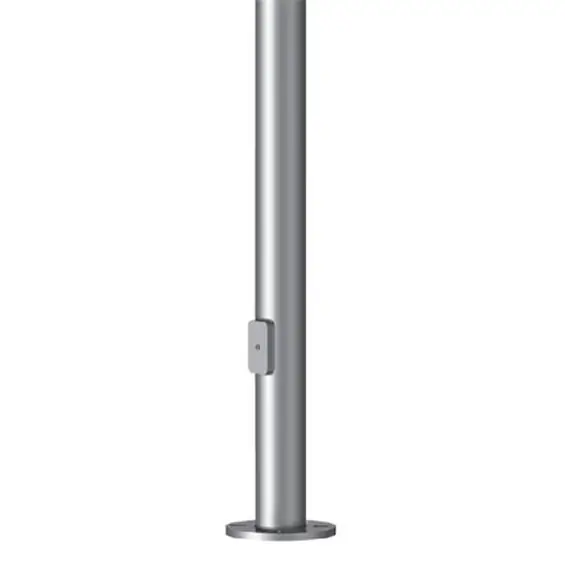2025 Author: Howard Calhoun | [email protected]. Last modified: 2025-01-24 13:10:37
Electric networks and equipment serving them are built on a multi-level element base, communication links within which are provided with cables of various types. This is electrical wiring that can perform the tasks of distribution, transmission and main transportation of current. Control cables occupy a special place in this segment. This is a universal channel for transporting electric currents under voltage from 380 to 1000 V, which is mainly used not for servicing power circuits, but for providing intermediate switching between power plants.
Control cable device

The product is formed by several technological layers and a core directly involved in the transmission of current. The simplest structure of such a cable can be represented as follows:
- Conductive conductors.
- Insulating lining oncore surface.
- Filler.
- Outer protective shell.
The place of operation largely determines the requirements for the outer sheath of the wire. For example, a shielded control cable, in addition to standard mechanical protection, has insulation that protects the core from electromagnetic and electronic interference. Shielding is one of the most complex forms of external protection of a current-carrying circuit, representing a metal coating with certain properties for the localization of electrical energy. Structural coatings can also be used at the level of the filler and the outer sheath, protecting the cable core from physical influences, moisture, fire, dust, etc. For this, a wide range of different materials is used from polyvinyl chloride with the same metal to mica-containing tapes.
Cable conductors

Nevertheless, the main functional element of any cable is its core. In this case, copper or aluminum (including its copper-plated version) is used to make the conductive wire. As for the design, it is most often a single conductor or several thin twisted wires that provide the ability to safely bend the control cable. Single-type conductors are used in stationary power plants, where there is no need for bends and twists. The twisted-wire design, in turn, is used in equipment and places of operation where dynamic loads on the wire are provided. For example, thismay be mobile electrical installations, generator sets or batteries.
The material of manufacture also determines the difference in approaches to the use of wires. As already mentioned, mainly copper or aluminum is used for the conductive part. Copper products are more often used in 220 kV substations. In principle, this material is most suitable for universal use in electrical installations. Aluminum is more often used due to its more affordable cost where there are no high requirements for the reliability and accuracy of the system.
Main classifications of control cable

There are several parameters by which control cables are separated. In particular, the main classifications include:
- Material of wire base.
- Insulation material.
- Wire shape.
- Section characteristics.
- Protective cover properties.
Special modifications include armored, dielectric and waterproof wires designed for harsh operating conditions with aggressive environments.
Classification by site conditions
Cables are also divided according to the conditions of use in terms of external influence of mechanical loads:
- Indoors, in trenches and channels without the influence of forces that promote stretching. The protection is formed by the winding of steel tapes with anti-corrosion coating. This is a typical control cable KVVGng, which is used in places that do not providestrong mechanical impacts, as well as fire hazards.
- In trenches and soil without large external tensile forces. The armor layer is formed by a double steel tape with an additional outer cover of PVC compound.
- In soil and channels subject to high tensile forces. The armor is formed by steel wire rods coated with a zinc layer and PVC-compound cover.
Laying the control cable

Already in the process of laying, a special metal bandage with a corrugated tube is provided to protect the cable sheath. On the reverse side, the wiring closes on distribution terminals, electrical boxes and boxes. As a rule, electrical installation equipment operates at 380 kV. From power devices, a copper control cable is laid through protected channels and trays to the main electrical circuit of the consumer. Terminal boxes and switch cabinets are marked with special ink indicating the characteristics of the conductive element and the outer layers of the sheath.
Connect cable
There are different ways to connect the loop to the target equipment. Depending on the destination host, the following configurations may be used:
- The cable exits the main line with a branching into two streams.
- The cable is divided into the right and left sides of the electrical panel for distribution to multiple circuits.
- Free display throughoutworking area.
- Point-to-point connection is made via terminal clamps.
It is important not to forget that control cables are a device with a multi-level structure, so a special wiring tool must be used during its cutting. Be sure to use measuring instruments like a multimeter for comprehensive control of network parameters at all stages of assembling the circuit.

The effect of temperature and light on the cable
During the flow of electric current through the conductors of the wiring, overheating or hypothermia may occur, which will inevitably affect the performance of the cable and the properties of its design. Temperature factors should be initially calculated and reflected in the presence of appropriate protective qualities. For example, in conditions of low temperatures, it is recommended to use plastic insulation of control cables. This will prevent the formation of cracks and breakage of the conductor in frosty conditions. For example, a conventional polyethylene sheath loses its flexibility at sub-zero temperatures and often bursts, losing the necessary performance.
As for exposure to light, exposure to the sun will also damage the control cable. For optimal protection when using wiring outdoors, armor coverings with a thin aluminum or lead coating are suitable.

Control cable maintenance
Elimination and prevention of minor defects and damage oncable line is a prerequisite for maintaining stable operation of the electrical network. On a regular basis, the maintenance personnel inspects and performs electrical diagnostics of the track, promptly changing couplings, fixing elements and a protective shell. In accordance with the schedule and the technological map, cleaning and reconnection of the control cable is carried out at certain intervals.
Flexible circuits are checked separately at bends and joints. Even with an externally solid sheath, such conductors can be damaged by cores, therefore, an analysis of the internal structure by means of non-destructive testing is required. Time intervals between comprehensive oversight activities can vary from several months to 2-5 years.
Conclusion

Cables of this type are widely used due to their versatility in terms of their ability to be used in a variety of working conditions. This is not a target means of delivering current over long distances due to the high cost and technological complexity of installation. However, for critical power supply areas, control cables are the optimal solution. The growing popularity of such wiring is also facilitated by its environmental safety. Even in aggressive environments, the control cable does not emit substances hazardous to he alth and does not have a harmful effect on the environment. In terms of maintaining the protective qualities of a directly conductive core, again, much will depend on the quality of the layers of the outerinsulation and the main metal cover at the installation site.
Recommended:
Types of plastics and their applications. Types of plastic porosity

Different types of plastics provide ample opportunities for creating certain designs and parts. It is no coincidence that such elements are used in a variety of fields: from mechanical engineering and radio engineering to medicine and agriculture. Pipes, machine parts, insulation materials, appliance cases and household products are just a few of the things that can be created from plastic
Automation of control systems: levels, tools, features and applications

Automation of control systems, or ACS for short, is a set of devices that allows you to effectively and semi-automatically or fully automatically monitor the progress of the process. They are most widely used in industry
The most valuable wood species: description, types and applications

For a long time, precious wood has been used by man for the construction of housing and ships, the manufacture of furniture and household utensils. Why not? After all, the material is distinguished by its reliability, beauty and natural warmth. Therefore, it is not at all surprising that in the conditions of modern production, natural wood of valuable species, described below, is actively used to form a wide range of products
Steel support: types, types, characteristics, purpose, installation rules, operation features and applications

Steel poles today are most often used as lighting poles. With their help, they equip the lighting of roads, streets, courtyards of residential buildings, etc. In addition, such structures are often used as supports for power lines
Centrifugal chemical pumps: types, applications and types

Chemical centrifugal pumps differ from conventional ones in that they can be used to pump liquids that are characterized by the presence of aggressive or explosive substances in the composition. Among such devices, the most popular are sealed units

